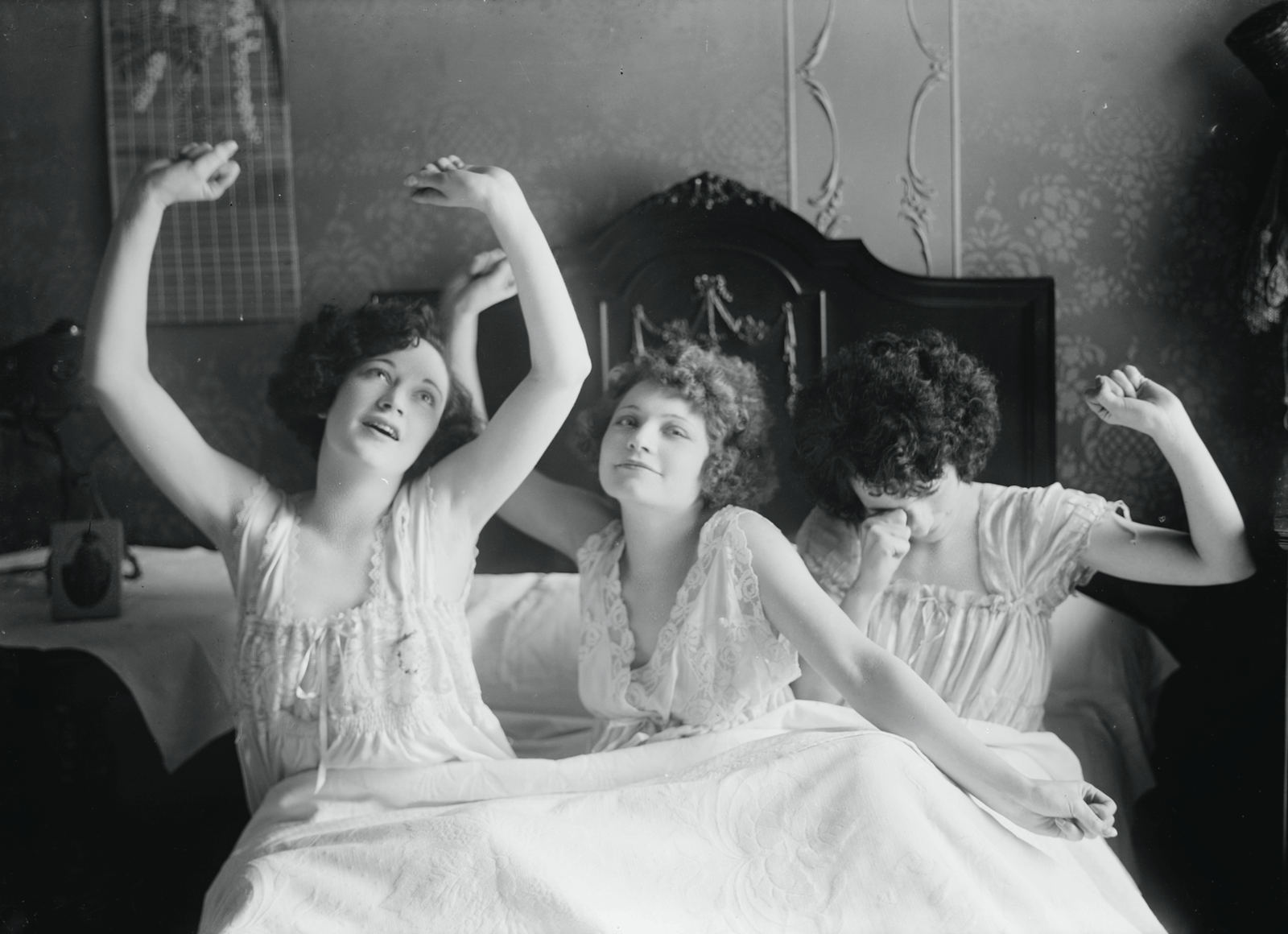The origin of the pajama is a rich history lesson in and of itself, appearing as far back as the Ottoman empire. From an Asian garment that became a European fashion piece, the pajama has always been focused on providing comfort. But today, pajamas are also about style.
Imagine you’ve wrapped up a long, hard day at work. Maybe you’ve had something to eat, poured a glass of wine, and are hopping in the shower to unwind. The transition between day and night can be easily commemorated with your wardrobe change from work wear into chill mode (even if you’re used to being cloaked in the athleisure of today’s work from home world).
Sleepwear and loungewear have become pandemic staples over the past two years. Between working from home or just feeling the desire to be more comfortable in the new norm, shoppers have transitioned from investing in business suits and instead are seeking out high-quality, ethically-made staples that can meet today’s 24/7 demands.
When Were Pajamas Invented?
Spell it however you like, but the origin of the word “pajama” comes from the Hindi words pai jama, which translates to “leg clothing.” These were loose, free-flowing garments tied at the waist with a drawstring, and they were worn by both men and women in countries across South East Asia and the Middle East.
During the sixteenth and seventeenth centuries, Europeans who traveled to these areas began adopting pajamas, bringing them back to Europe. At first, they were symbols of wealth and knowledge due to their scarcity and elite status. Most sleepwear historians believe that the pajama’s public popularity in the West began much later—in the late nineteenth century—and this is where the pajama as we know it today evolved from.
How Did Pajamas Become Sleepwear?
Before the pajama, the earliest sleepwear in Europe from the seventeenth and eighteenth centuries looked more like a dressing gown or robe. They were one long garment that fell to the ankles and feet, although shorter versions eventually gained popularity, too. If you imagine characters like Ebeneezer Scrooge or Jane Austen heroines, chances are you may be thinking of them wearing this nightgown-style garment.
Although the fashion aspect of pajamas may be more heavily marketed more to women today, historically, pajamas were worn for one of two reasons. Pajamas provided warmth before the days of modern heating. And they also showed off a person’s status and wealth.
Besides the warmth and status they signalled, sleepwear also became popular in the Victorian era for their increasing attention to hygiene and cleanliness. Sleepwear kept dirt and grime away from your everyday clothes and off the bed sheets, drawing a separation between the daytime and nighttime transition.
Pajamas, as we know them today, weren’t developed until the late-nineteenth century. Influenced by Eastern clothing trends, sleepwear became divided into two pieces. The button-up nightgown was shortened into a shirt and a pair of loose-fitting, comfortable bottoms rounded out the look. Though these early-day pajamas were relatively simple in their construction, they were still considered luxury items. Designers began changing their from silk to flannel and cotton, allowing production to start bringing sleepwear to the masses.
By the 1920s, fashionistas and trendsetters would popularize the pajama, crafting unique designs that inspired women to show their sense of style in the comfort of their own homes.

When Did Sleepwear Become Sexy?
As women started to step into their sexuality and personal freedoms starting in the roaring twenties, the emergence of the bombshell was translated into sleepwear style. Silk, satin, bold colours, provocative cuts—from the neglige to the teddy, sleepwear was suddenly sexy.
Clothing designers have constantly evolved pajama style over time, adding details and changing silhouettes to suit trends. From bows and lace to fur trim and feather boas, sleepwear became fashion-forward as its daytime clothing counterparts. Designers such as Coco Chanel developed their signature versions like beach pajamas intended to be worn on a boardwalk or by the sea. In the 1930s, the evening pajamas grew to such popularity that it was suitable attire for at-home dining to channel your inner Greta Garbo or Katherine Hepburn.
Around the 1960s, things changed even more drastically as women got into the trend of buying matching bras and panties (often with matching babydolls, gowns, and garters). But it wasn’t until the 1970s when loungewear took hold, with lingerie blurring the lines between evening wear and sleepwear. Women began adopting the baggy flannels typically worn by men and deciding that their comfort trumped all. The fashion of the times reflected this preference by women with the emergence of more unisex pajama styles. This statement in loungewear coincided with growth in the feminist movement which empowered women to feel free to wear what they chose to.

What Does this Mean for Sleepwear Today?
From grunge rock to Victoria’s Secret fashion shows, today’s sleepwear draws from many different cultural influences. After evolving so much over the decades, continues to change and break conventions sleepwear and loungewear . The core of pajamas and loungewear today, though, still embraces comfort as queen. Whether you choose something more defined, like the Frankie Lounge Dress, or seek to find versatility from day to night with the Edith Midweight Slim Jogger, the importance of balancing style and comfort are much more attainable today.

Sources
https://fashion-history.lovetoknow.com/clothing-types-styles/origins-pajamas

